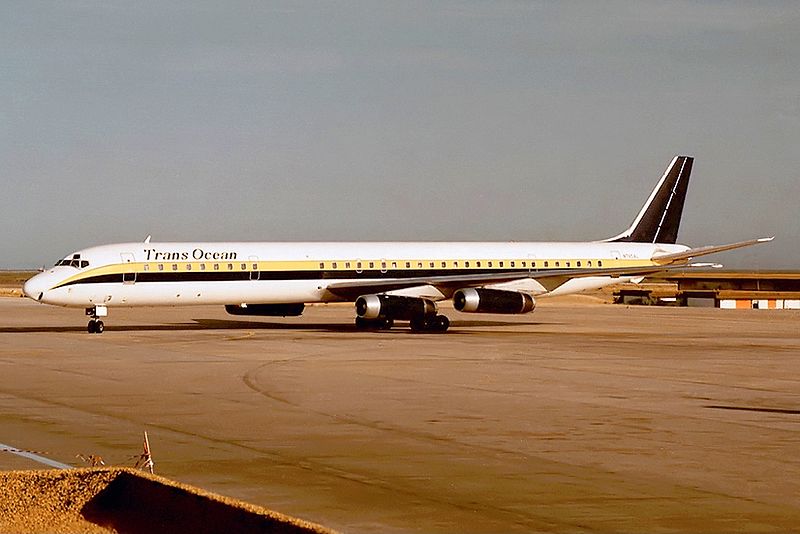Transocean Airways – A Look Back – April 3, 2020

Panagra….The Airline Pan Am Created To Dominate Latin and South America – March 27, 2020
March 27, 2020
Transocean Airways – A Look Back – Part Two- April 10, 2020
April 5, 2020RN3DB
April 3, 2020
Good Morning and welcome back—This week we are looking back at one of the largest non-scheduled airlines in history. This was a seven part series I published on the blog in 2011, but this time I will divide the articles up over a few weeks instead of seven weeks. I hope you enjoy reading this as much as I enjoyed doing the research and bringing you the results.
A great airline…a great company. Enjoy………………………
Transocean Airlines
Captain Orvis Marcus Nelson, later to become the founder of Transocean Air Lines, was a veteran pilot flying for United Air Lines when the United States entered World War II in 1941. He had then been assigned to fly for The Air Transport Command (ATC) of the U.S. Army Air Corps under a contract held by United and was one of the civilians flying the C-54 four-engine transports in conjunction with “The Purple Mission.” This was the code name for the landing, set for November 1, 1945, of the first wave of occupation troops. Okinawa, the island nearest to the Land of the Rising Sun, had been designated as the staging area for “The Purple Mission.” Servicemen, supplies, and what seemed to be every C-54 transport in the world had been amassed on the island in preparation for the invasion of Japan before the atom bomb ended the need for a land invasion.
Nelson was in flight between Guam and Kwajalein when the first atom bomb was unleashed over Japan and between Kwajalein and Johnston Island when the news of the bomb was broadcast. By the time he arrived at Honolulu there were indications that Japan might surrender, and he was directed to return his aircraft to Okinawa. Grounded on Okinawa in mid-August, Nelson and several other United crewmen sat around talking, killing time while waiting for back-to-back typhoons to wear themselves out. In the group were Sid Nelson, who had been active in the Air Line Pilots’ Association with Orvis and who would become a director of TAL; Harry Huking, a senior United pilot; and radio operator Sherwood Nichols, destined to be secretary-treasurer and one of the original directors of the airline. In the light of a single candle, with torrential rain and wind battering the canvas Army tent they occupied near the Yontan Airstrip, the conversation quickly turned to the usual topic-what to do after the war ended. Most of the men had had a taste of flying to exotic places in all the corners of the world, and they did not want to let go of that thrill. If at all possible, they wanted to continue flying for commercial airlines. Nelson reasoned that it would undoubtedly be a long time before the Japanese would be permitted to have their own domestic airline and he suggested that someone from the group propose to United Air Lines to either extend its routes across the Pacific to the Orient or organize a domestic airline in Japan. If either idea proved unacceptable to United management, Nelson felt that the next step should be to try to set up a Japanese airline themselves. The men agreed with the plan and decided there in the tent to form an association. Each member agreed to put up money if and when the time came to do so. The name they chose was ONAT for Orvis Nelson Air Transport Company, and they elected Nelson their representative to contact United. United’s “Pat” Patterson rejected the proposal to extend its service to Hawaii or to establish a domestic airline in Japan. However, he did help Nelson by providing him with a letter of introduction to General Douglas MacArthur, the Allied Supreme Commander in charge of the reconstruction of Japan and from whom permission for the venture would be required. Nelson then went to an old friend, Colonel W.E. “Dusty” Rhoades, who had been MacArthur’s personal pilot throughout the war, and asked him to explore the project with the general in Tokyo. The answer was again discouraging. MacArthur rejected the proposal, saying he thought it inadvisable to set up an American carrier in Japan until a formal peace treaty was signed. Disappointed by his failure to interest either United or MacArthur in their plans, Nelson shelved the Okinawa group’s idea.
By early March, Nelson was back flying United’s Denver-to-San Francisco route when he received a call from Jack Herlihy, vice-president in charge of operations for UAL. Herlihy asked Nelson how soon he could organize a flying operation in the Pacific for the ATC under a subcontract from United to provide twice-daily transport service between Hamilton Field near San Francisco, and Hickam Field, Hawaii. Nelson jumped at the opportunity without concern for “how soon.” He knew he could do it. Herlihy offered to lend key personnel to begin the organization and told Nelson that negotiations were already under way for the lease of twelve surplus U.S. Air Force C-54s. Then he issued a nearly impossible demand: position the first airplane in Honolulu in time for a return flight to the West Coast on March 18. This meant that Nelson, a pilot without an airplane or a hangar to put it in, had just ten days to construct an airline. Nelson began moving at top speed within seconds after his conversation with Herlihy.
He first called his wartime radio operator, Sherwood Nichols, who was then working as a station attendant for United at Boise, Idaho. Nichols immediately agreed to join Nelson as chief of communications. The next items on Nelson’s agenda were to locate the rest of the Okinawa group, borrow the United men Herlihy had promised, place classified ads for flight crews in the San Francisco and Los Angeles newspapers, and then telephone Hamilton Field to inform them he was in business. To his surprise, this news had already reached the installation earlier in the day. Base personnel told Nelson that some fifty demobilized pilots were already on their way to apply for jobs. Several thousand telephone calls for Nelson were received at his San Lorenzo, California, home during the first twenty-four hours of his search for flight crews, setting a record at the local telephone company for the most calls ever routed to a residence.
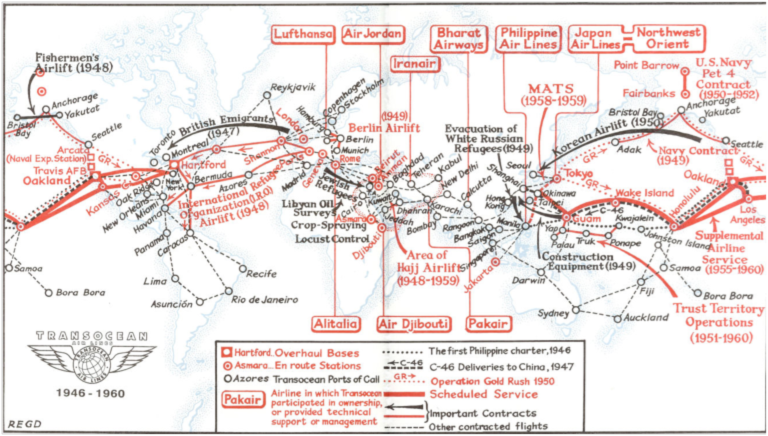
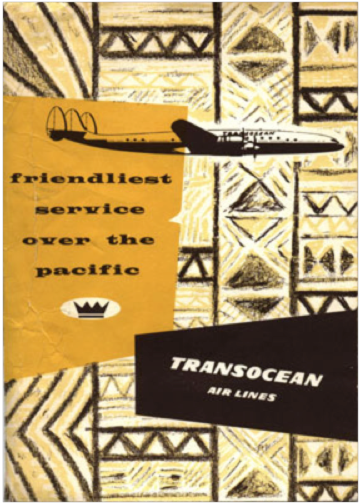
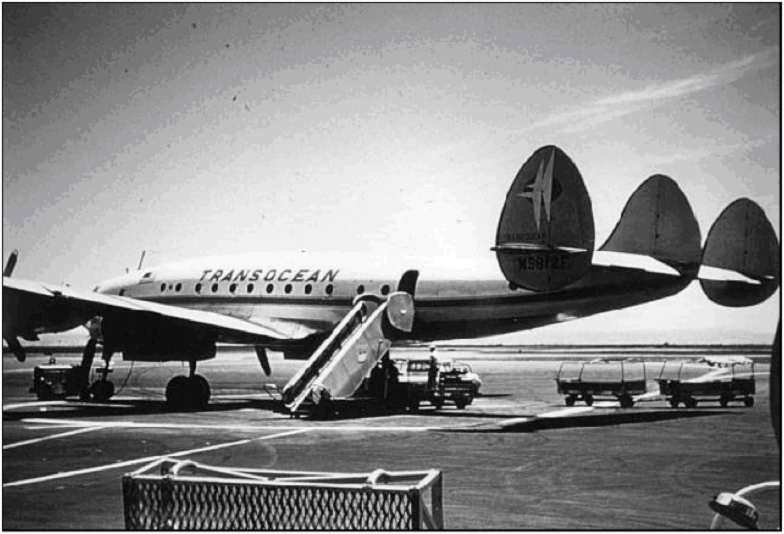
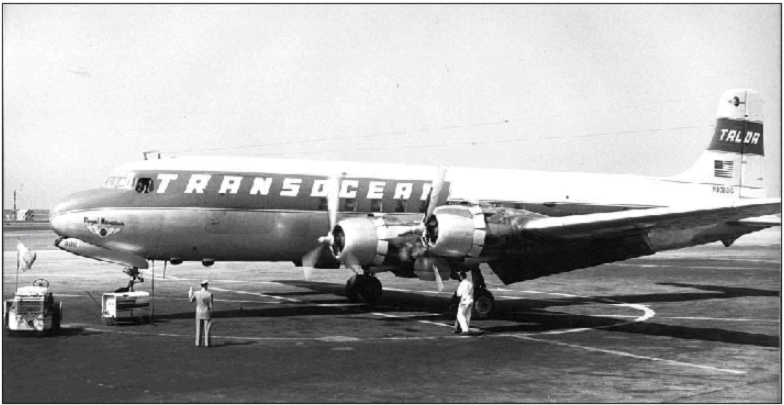
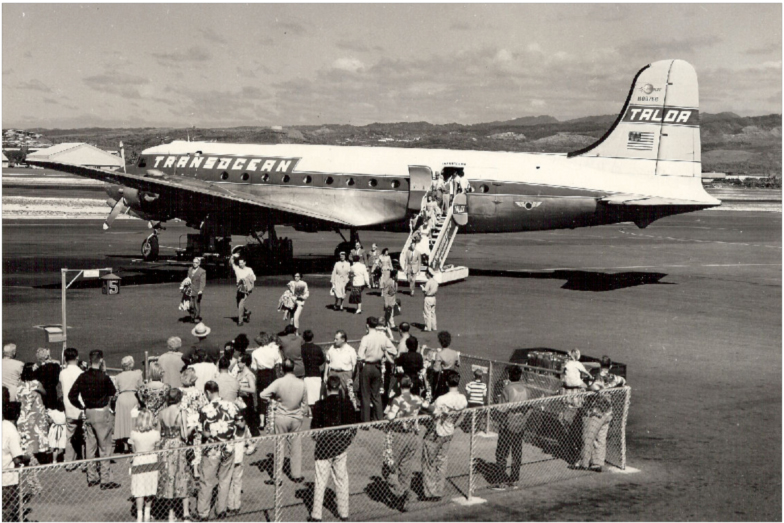
On March 11, 1946, Nelson terminated his employment with United Air Lines and then attended a conference sponsored by the ATC staff for United Air Lines and the other subcontractors on the transpacific project. General Bob Nowland presided over the discussion. Nowland, who was then the commanding general of the Pacific Wing of the ATC, had been a first lieutenant in Nelson’s Army Air Corps outfit in the Philippines in 1928 and 1929. Colonel Ray T. Elsmore, another prominent officer at the conference, had once been employed by Western Air Lines, had practiced law, and had been a pilot for the U.S. Postal Service. Elsmore had served as Director of Air Transport, Allied Air Forces in the Southwest Pacific, under General George C. Kenney during World War 11. On active duty since 1940, Elsmore had been in the Philippines when the Japanese invaded the islands but had managed to escape to Australia on the last airplane out. He subsequently directed troop-carrier ATC operations in the Pacific.
Nelson was impressed with Elsmore’s demeanor and military and commercial flying record and hired him on the spot as his chief assistant. Elsmore soon would carry the title of executive vice president of ONAT. When Nelson returned to his San Lorenzo home that night, he was greeted by a large group of pilots, copilots, radio operators, navigators, flight engineers, and operations men filling his front porch and milling around in front of his house. Most were hired that night, including William Word, who would become a flight captain for ONAT, and Harvey Rogers, later to be chief pilot of the airline.
The hiring of Sam Wilson, Wally Simpton, and Art Bisset was typical of the flamboyant way Nelson gathered his personnel. Wilson was still in the Air Corps but had decided to make the switch to civilian life when he heard of Nelson’s “start-up” airline in March, 1946. He called the local United Air Lines office for information and waited while someone there telephoned Nelson’s home. When Nelson answered, Wilson got on the line: “I hear you’re looking for pilots,” said Wilson. “Yes,” replied Nelson. “You are looking for a job?” Maybe,” said Wilson cautiously. “O. K. – you’re hired.” This seemed a little abrupt to Wilson. “Don’t you even want to see my logbook?” he asked. “Hell, no – I’ve heard all about you.” “Well … say, Nelson, there’s another fellow here who’s looking for a pilot’s job-name of Wally Simpton.” “Is he O.K.?” asked Nelson. “Yes. . . “O. K.-he’s hired.”
Bisset had just been discharged from the military when he spotted the “Flight Engineers Wanted” advertisement in a local newspaper and went to Oakland Municipal Airport (now Oakland International Airport) to check it out. When Nelson asked what kinds of airplanes he’d flown, Bisset started to reply with B-17s and B-24s when Nelson interrupted to tell him he was hired. The frenetic pace picked up. On Wednesday, March 13, Nelson and Captain W. W. “Pop” Warner headed for the San Francisco International Airport to receive the first of the twelve Army owned C-54s to be leased to GNAT and ferry it across San Francisco Bay to Oakland. No sooner had they taxied the aircraft to a stop when Nelson hurried off to find office space for the operation. He discovered that the old two-story stucco hotel at Oakland Municipal Airport (said to be the first airport hotel in the nation) was vacant and signed a lease with the Port of Oakland.
Oakland Municipal Airport had been the departure point for many of the early air races such as the Dole Pineapple Race on August 16, 1927. That year eight fliers competed for $35,000 in prize money offered by Jim Dole, so-called “Pineapple King” of Hawaii. The Oakland Airport was also aviatrix Amelia Earhart’s departure point on May 20, 1937 when she and her navigator, Paul Noonan, began their second attempt to circle the globe. The Lockheed lifted off from Runway 27 heading east. They hop scotched across the country, landing at Tucson, New Orleans, and Miami. On June 1 they left Miami, stopping en route at such places as Caripito, Venezuela; Natal, Brazil; Fort Lamy, Chad, French Equatorial Africa; Calcutta, India; and Singapore. They were more than half way around the world when they landed at Lae, New Guinea, on June 30. On July second, after departing Lae, Amelia Earhart’s plane vanished over the Pacific without even an oil slick. A new era at the historic Oakland Airport was about to begin as Orvis Nelson Air Transport went into business. Soon veterans from all branches of’ the armed forces were queued in a long line stretching from the entrance, down the steps and to the tiny airport restaurant up the street. They looked as though they had just been discharged as most were still dressed in their military uniforms and carrying duffel bags.
Nelson’s “executive office” was bare except for a single telephone positioned in the middle of the floor. Between phone calls Nelson asked few questions of the men who came through his door to be interviewed and hired nearly every one of them. Within several days Nelson had established the dispatch office, the chief pilot’s office, and a room for communications and navigation personnel on the first floor. On the second floor he installed the payroll and accounting departments, a pilot’s lounge for the standby crew, plus offices for the secretaries, Elsmore, and himself. The place hummed with activity and excitement. Even Nelson’s former bosses at United were caught up in the enthusiasm generated by the exuberant GNAT group. Jack Herlihy not only kept his word to Nelson for the loan of certain personnel but also persuaded UAL management to supply some of the needed office equipment and furniture, applications and other business forms. But most important, he provided two office managers to assist in creating office procedures and company policies. On the eleventh day, after the ten days of “creation,” Nelson rested. In that time, Nelson had managed to create the foundation for an airline that would eventually become the world’s largest supplemental air carrier.

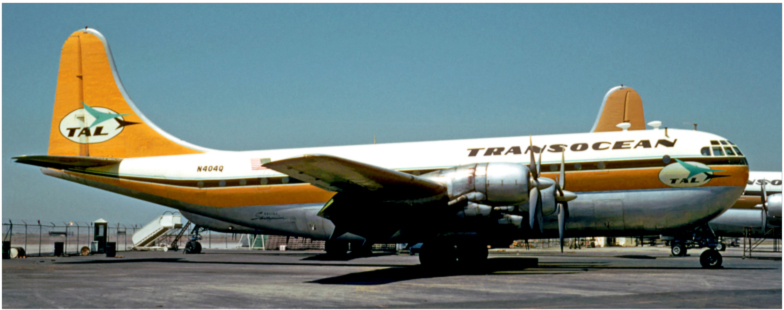
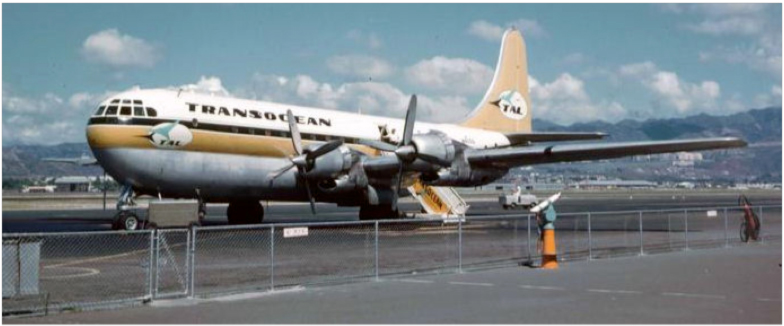
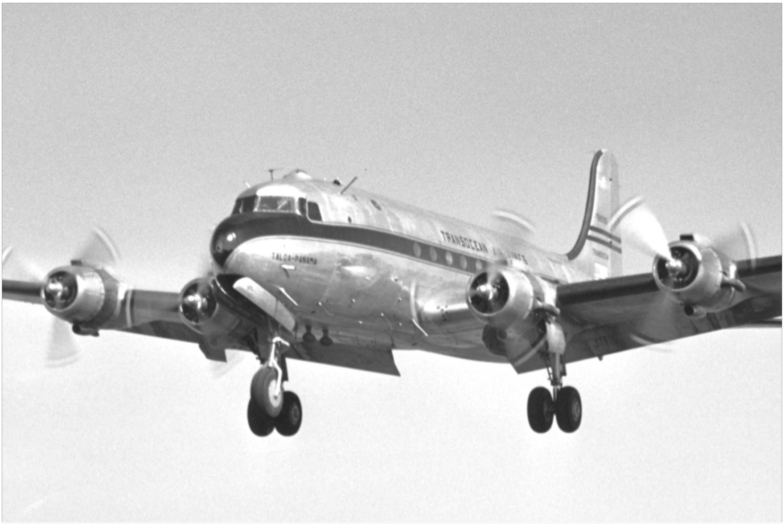
Source Document (Article and Photos)
Have a good weekend, take care/be safe, and join us next week for part two.
Robert Novell,
April 3, 2020


